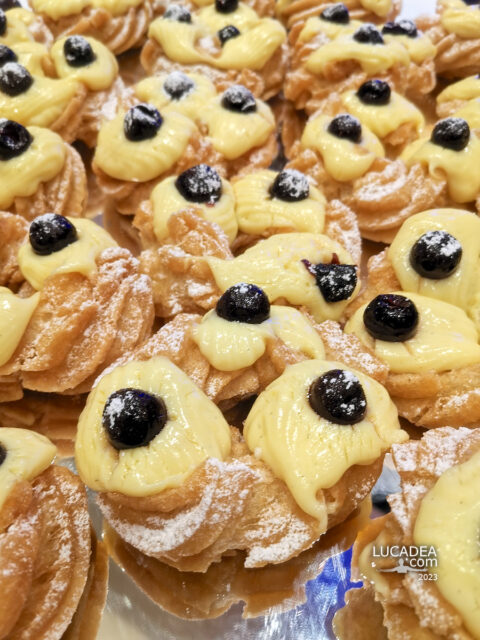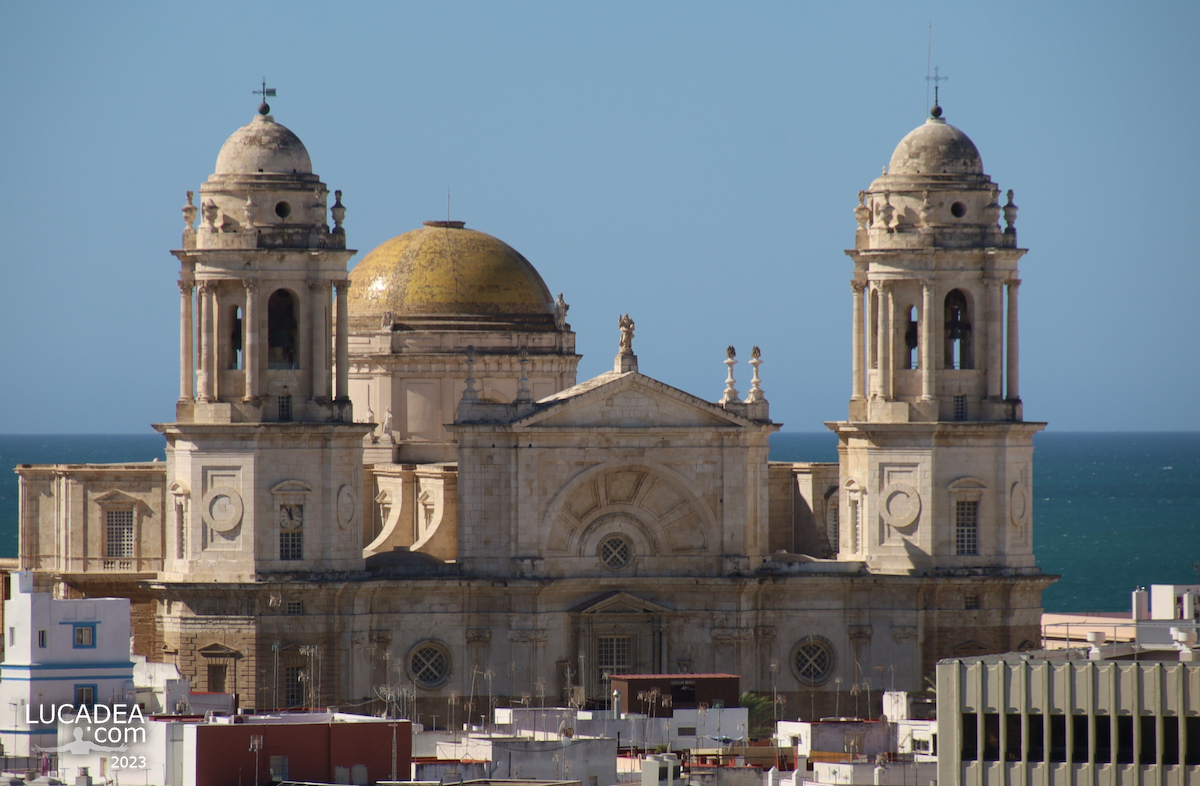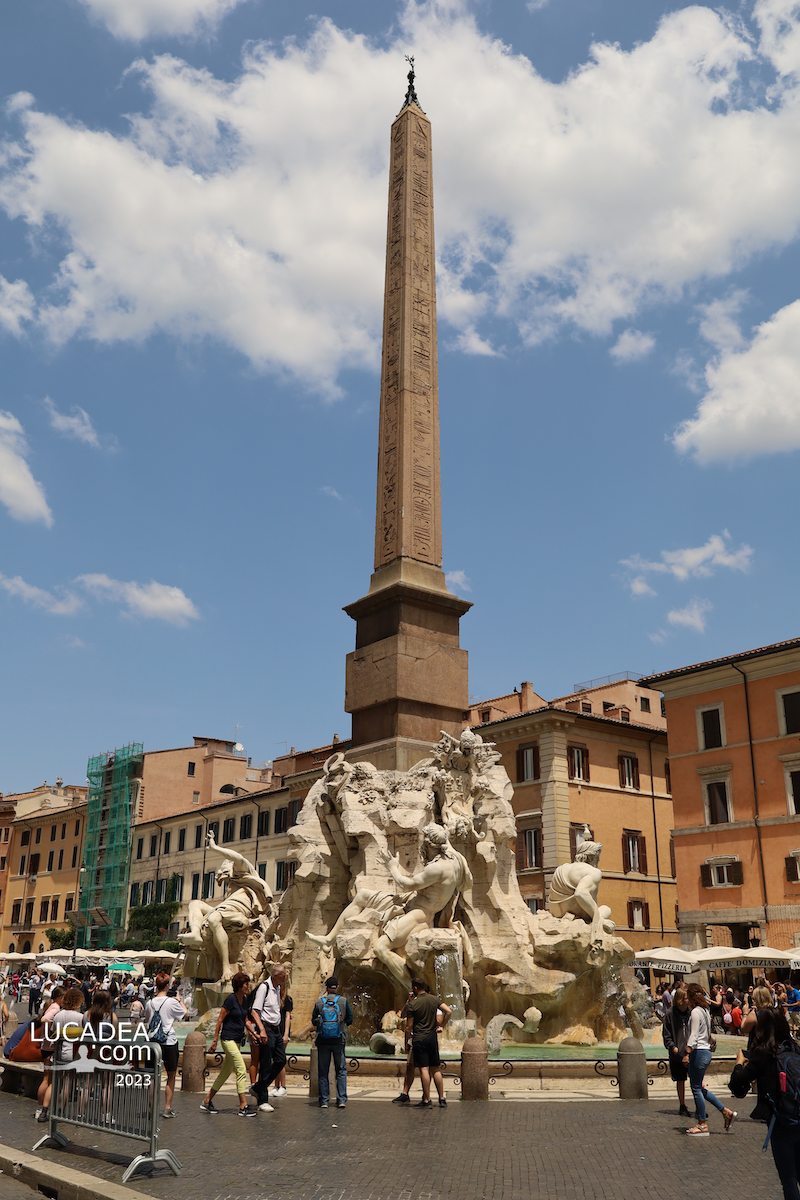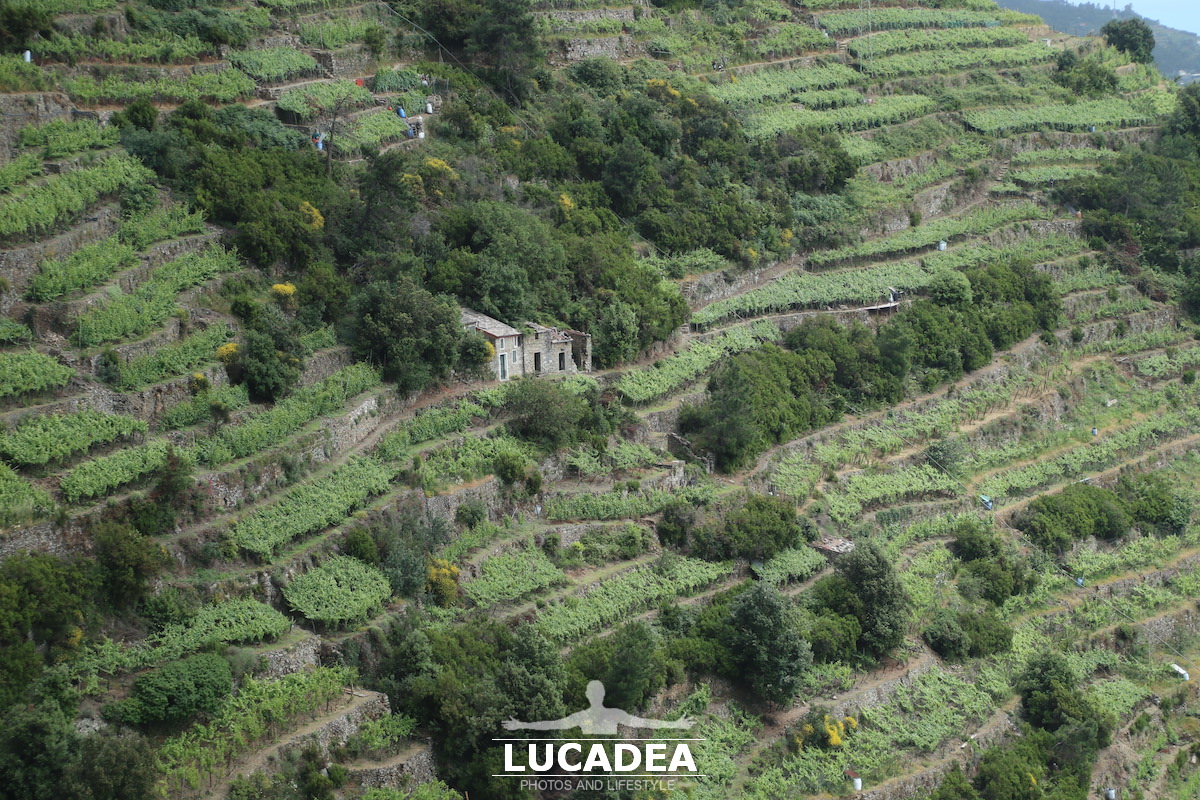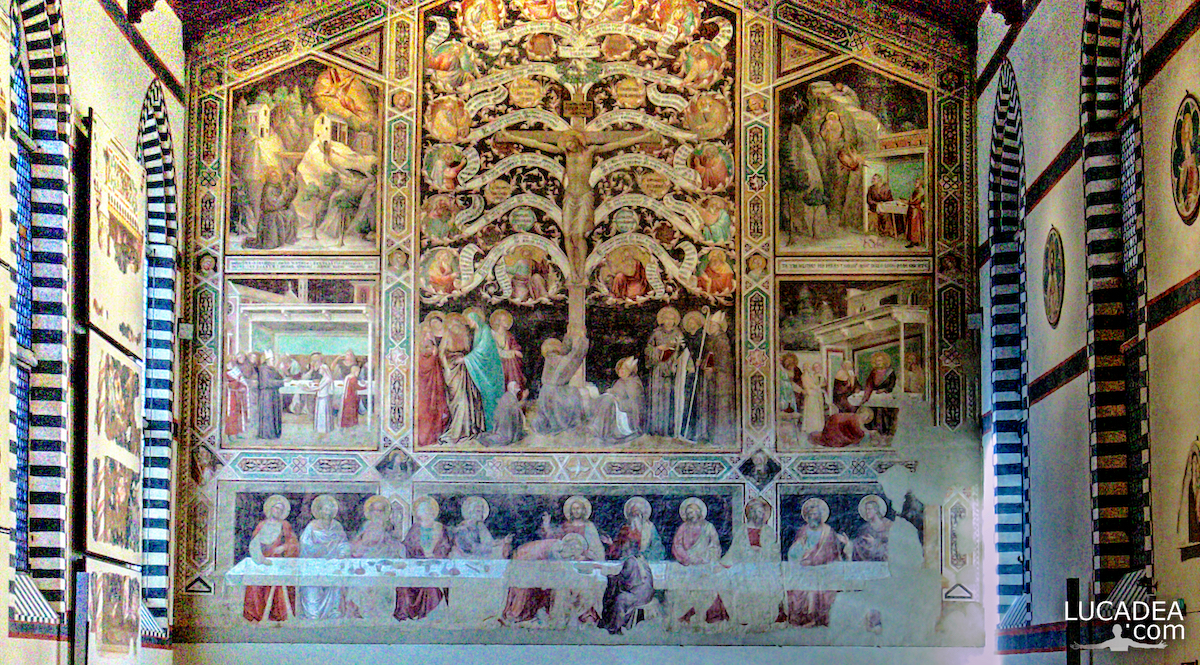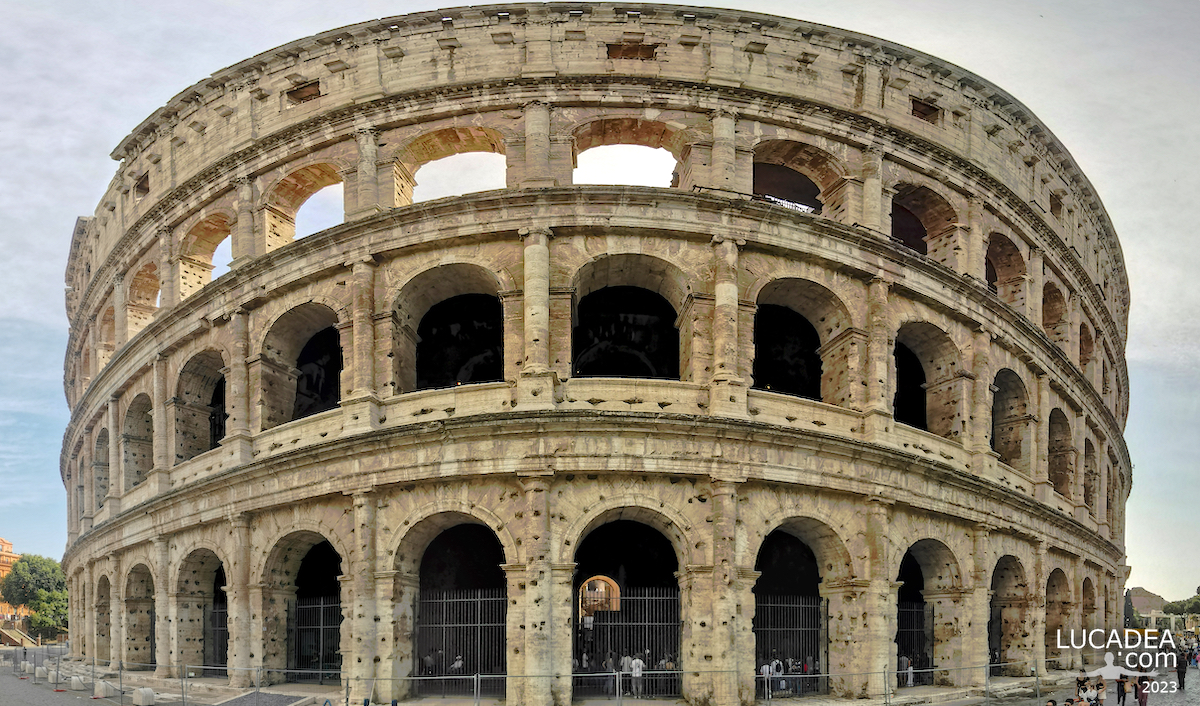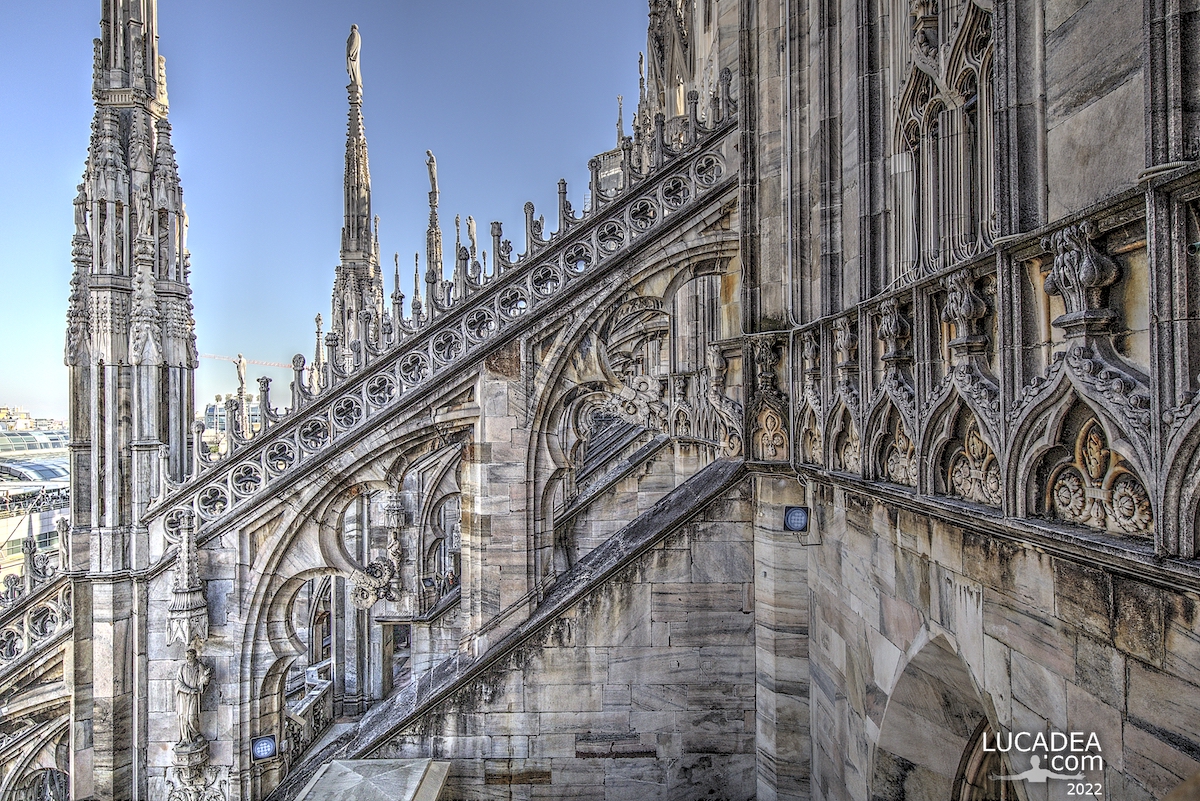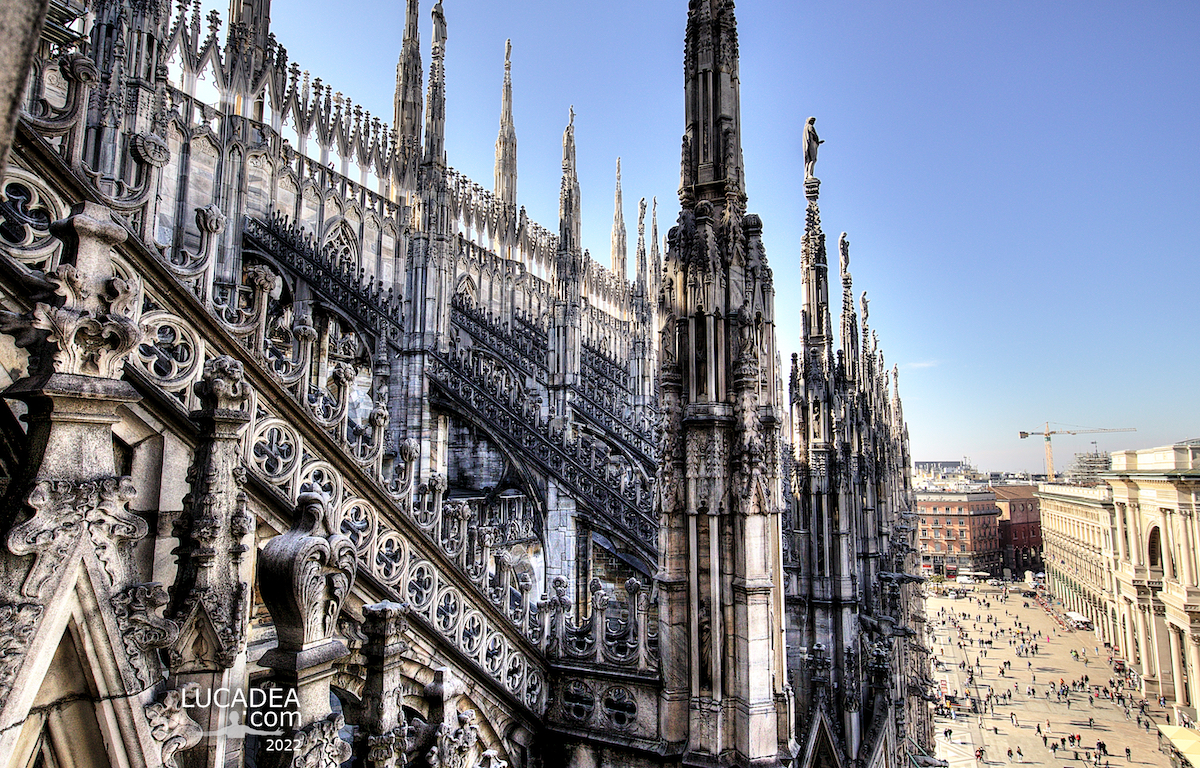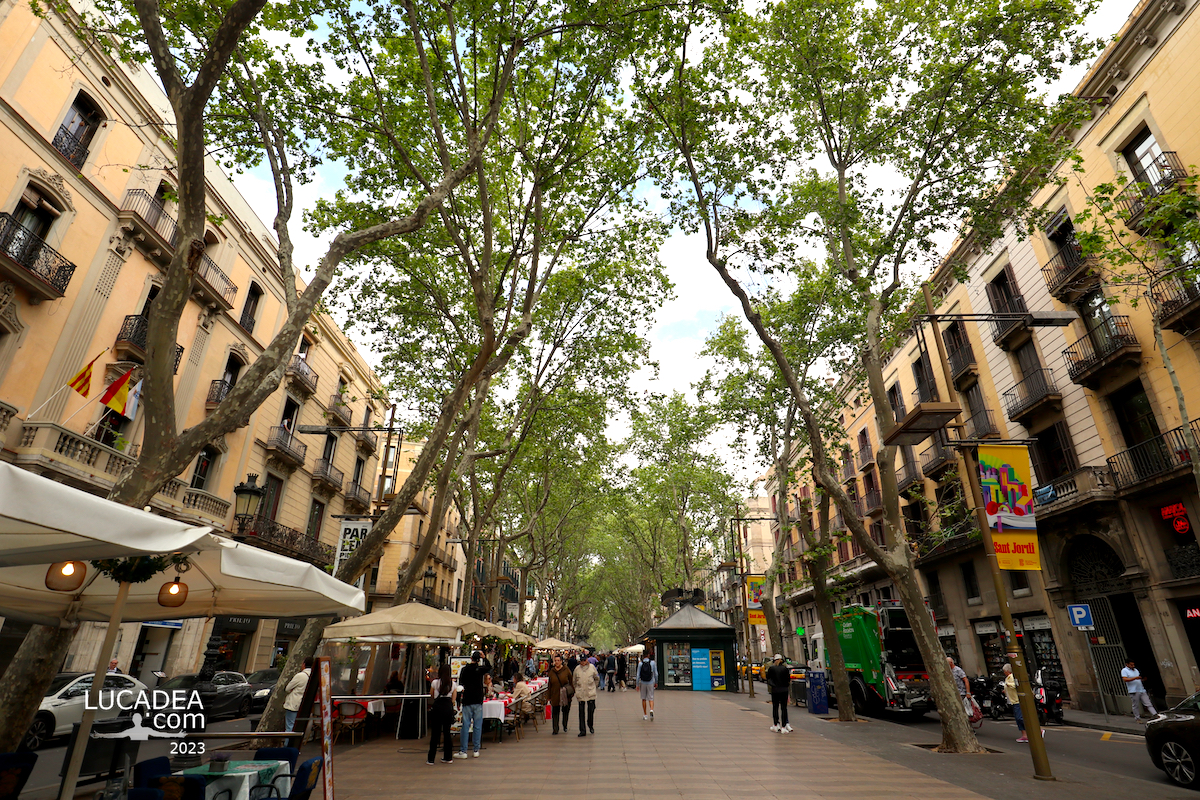Le zeppole di San Giuseppe, il dolce dedicato ai papà il 19 marzo.
Le zeppole di San Giuseppe sono una deliziosa specialità culinaria italiana tradizionalmente associata alla festa di San Giuseppe, che si celebra il 19 marzo. Questi dolci sono particolarmente popolari in alcune regioni d’Italia, come la Campania, la Sicilia e la Calabria, ma vengono preparati e gustati in diverse varianti in tutto il paese.
Le zeppole di San Giuseppe sono dolci a base di pasta choux, una pasta leggera e soffice che si gonfia durante la cottura, creando un guscio vuoto all’interno. Questo guscio può essere farcito con una varietà di creme e guarnizioni. Le versioni più tradizionali sono farcite con crema pasticcera, ma esistono anche varianti che utilizzano ricotta, cioccolato o persino crema di pistacchio.
Solitamente, le zeppole sono decorate con ciliegie candite o amarene, e spolverate con zucchero a velo. In alcune regioni, come la Sicilia, è comune aggiungere uno strato di glassa di zucchero colorata verde o rosa, o decorare con granella di pistacchio.
Le zeppole di San Giuseppe sono considerate un simbolo di fortuna e prosperità. Durante la festa di San Giuseppe, è consuetudine offrire zeppole ai parenti e agli amici. In alcune comunità italiane, specialmente negli Stati Uniti, è anche comune vendere zeppole nelle pasticcerie durante tutto il mese di marzo in onore del santo patrono.
La preparazione delle zeppole può richiedere un po’ di pazienza, poiché la pasta choux richiede una cottura precisa e una buona padronanza. Tuttavia, il risultato finale è un dolce leggero e delizioso che è molto apprezzato dagli amanti della pasticceria italiana.
Le zeppole di San Giuseppe sono un’autentica delizia che incarna la ricca tradizione culinaria italiana e l’amore per la buona cucina durante le festività religiose e familiari.
Conoscevi questa tradizione? Aggiungi un tuo comment or go to the bottom of the site to read what other visitors have written.
Photo taken with Honor 20.
La Chiesa cattolica ricorda san Giuseppe il 19 marzo con una solennità a lui intitolata; se il 19 marzo ricorre in una domenica di Quaresima, la festa è spostata al giorno seguente; inoltre, negli anni in cui il 19 marzo cade nella Settimana santa, la celebrazione è anticipata al sabato prima della domenica delle Palme (per esempio, nel 2008 la solennità è stata celebrata il 15 marzo). In alcuni luoghi, come in Vaticano e in Cantone Ticino, ma non in Italia, è festa di precetto.
Continue and learn more on Wikipedia
St. Joseph’s zeppole, the dessert dedicated to fathers on March 19th – Le zeppole de Saint Joseph, le dessert dédié aux pères le 19 mars – Zeppole de San José, el postre dedicado a los padres el 19 de marzo – Zeppole de São José, a sobremesa dedicada aos pais no dia 19 de março – St. Joseph’s Zeppole, der den Vätern gewidmete Nachtisch am 19. März – Zeppole của Thánh Giuse, món tráng miệng dành riêng cho những người cha vào ngày 19 tháng 3 – St. Joseph’s zeppole,3 月 19 日献给父亲的甜点 – 聖ヨセフのゼッポレ、3月19日に父親に捧げられるデザート
The text of the post was written with the help of ChatGPT, a language model from OpenAI.



